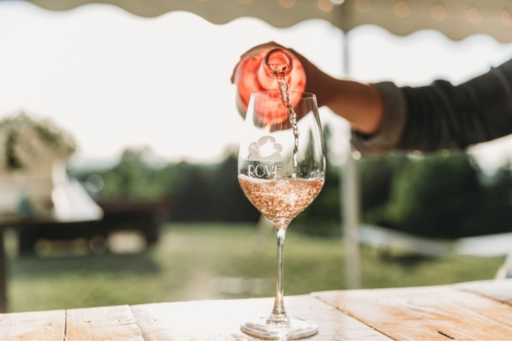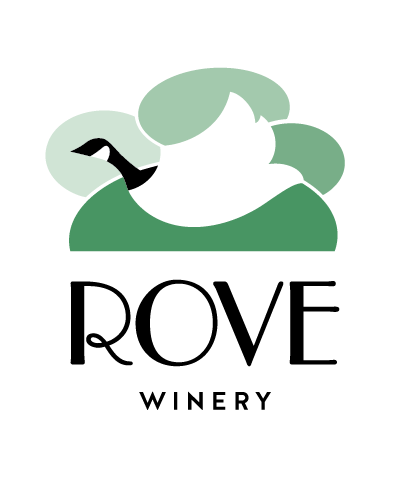
If you closed your eyes and imagined the best summer wine, we bet Rosé is what comes to mind. Rosé wine has become the quintessential summer wine to sip with its delicate, refreshing flavors. It’s perfect for a summer party, sipping at the poolside, or eating alfresco.
So let’s dive into all things Rosé wine!
Rosé Wine’s Origin & History
Produced for centuries, Rosé wine draws on connections back to the ancient Greeks. And thanks to the Phoenicians and Romans, Southern France became the epicenter of Rosé wine. The Phoenicians brought the Greek grapes to Southern France where the popularity of the light pink wines grew. When the Romans arrived, they used their considerable trade routes to make Rosé wine popular throughout the Mediterranean.
So what is a Rosé wine exactly?
First, there is no specific Rosé grape. Rosé wines are made from several types of grapes or a single varietal. There are some grapes grown and harvested specifically for Rosé. They harvest the grapes early in the grapevine’s life, which helps maintain the Rosé’s acidity and fresh fruit flavors.
And Rosé wine is not created by mixing red and white wines. Though such blends exist, Rosé wine is a category itself.
Grape skins are what give the color to Rosé. This is achieved through a variety of maceration methods, but mostly, it has to do with the time the grape skin comes into contact with the wine. Red wines come into contact with the grape skins for a long period, while most white wines have no contact with the grape skins. Rosé is in the middle. The longer the grape skin remains with the wine during maceration, the deeper pink the Rosé will get.
At Rove Estate, our signature Rosé blends have about 4 hours of skin contact to create that beautiful light pink or salmon color. We do not manipulate the color, so that pretty pink is 100% authentic!
We also choose specific vineyards for our Rosé wines, and it completely depends on the season. In a year that we can make high quality red wines, we will. But because we are a farm-first winery at Rove Estate, we make a Rosé wine in years that might be a little cooler. Sometimes our Rosé is a blend of red grape varietals (Cabernet Franc and Merlot), or some years we will do a single varietal wine (like Pinot Noir). These are all stylistic preferences that are decided in the cellar!
Rosé Wine’s Characteristics
The beauty of Rosé wine is its wide variety of flavors and tastes that can please any palate. Rosé wine comes in so many varieties that it’s a great year-round wine that can brighten up a winter night or cool down a summer’s day.
Rosé wine can be still, sparkling, or part of a blend. It’s usually fresh, fruity, and acidic and ranges from very dry to extremely sweet (like a Zinfandel).
The Rosé will taste different based on the type of grapes used, so it’s important to read the label to understand the flavor profile of the wine.
Color: Rosé wines come in a spectrum of pink, from pale blush and vivid pink, to dark pink.
Flavors: Depending on the type of Rosé, the flavors can range from strawberry to citrus zest and rhubarb.
At Rove Estate, because of our soil type and the fact that we grew cherries on our farm for decades before transitioning to vineyards, our Rose gets a lot of red fruit flavors – red cherry, dark cherry, strawberry, pomegranate, cranberry, and raspberry.
For other labels, typically light Rosés have strawberry, mint, and grapefruit flavors. Light-medium Rosés have cherry, rose petal, and herbal flavors. Medium-full Rosés have hints of raspberry, hibiscus, and white pepper. Whereas full rich Rosé wines have flavors of berry jam, bell peppers, and black pepper.
Aromas: Because of the ranges of Rosé varieties, the aroma profile can be different as well. You’ll find scents of strawberry, watermelon, and floral (think roses, violets, and jasmine).
Aging: Rosé wines are not aged since they’re produced for ultimate freshness. But it’s recommended to not store a bottle of Rosé over 2 years.
Rosé Wine Food Pairings
Depending on the type of Rosé wine you choose will determine the best food pairing.
Light Rosé wines pair well with salads, pasta, rice dishes, burgers, grilled fish, and seafood. Light-medium Rosé wines pair with grilled meats like lamb and pork and shellfish. Medium-full Rosés pair nicely with grilled chicken, pork, vegetables, and salads. Full rich Rosé wines are a great pair with BBQ, grilled ribeye, and pizza.
If you need more ideas for food pairings with your bottle of Rosé, check out our Summer Wine and Food Pairing Guide. And if you’d like to dig deeper into wine and food pairings, read our Food and Wine Pairing Rules 101 guide.
When serving your Rosé, serve it somewhere between 40-50°. So put your bottle in the fridge or an ice bucket several hours before serving. Though Rosé wines are made from red wine grapes, it’s not necessary to decant before serving – so this is up to preference!

Get ready to “Rosé all night” with Rove Estate’s 2020 Ragaire Rosé.
People like to say, “Rosé all day,” but at Rove Estate, we say, “Rosé all night!” Why? Because our 2020 Ragaire Rosé will make you want to do just that!
Ragaire is a Galic word meaning “someone who enjoys wandering all night.” And a bottle of Rove Estate Ragaire Rosé is the perfect companion for long talks in the night swinging on a porch swing or with a bonfire crackling in the background.
The Rove Estate Ragaire Rosé has aromas of white cherry, lemon, and delicate sweet pea flowers. The acidity zings from start to finish with vibrant flavors of peach, strawberry, cassis, and watermelon. You’ll love every sip!



